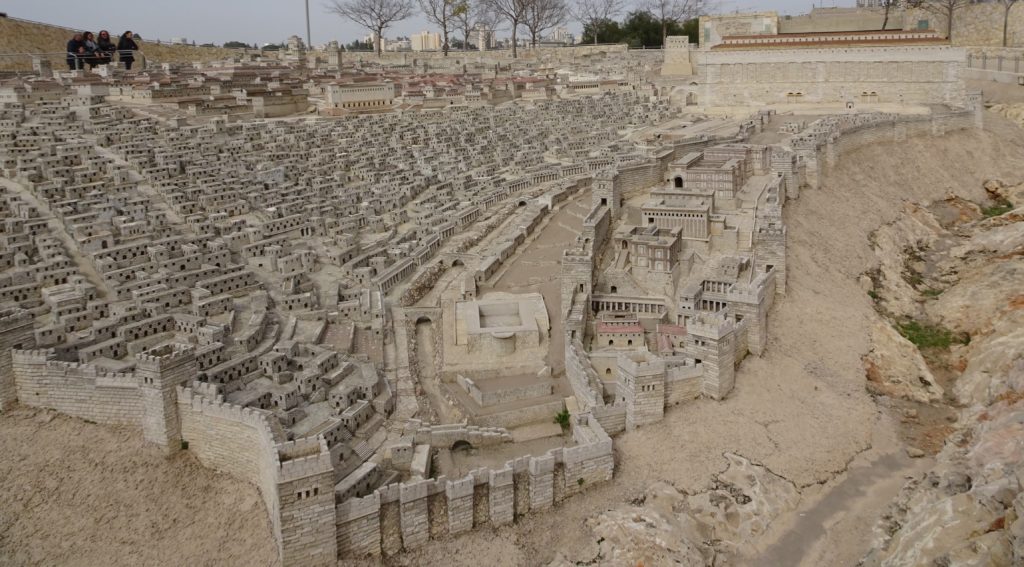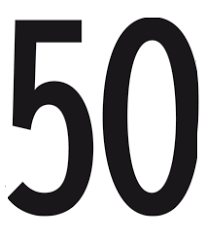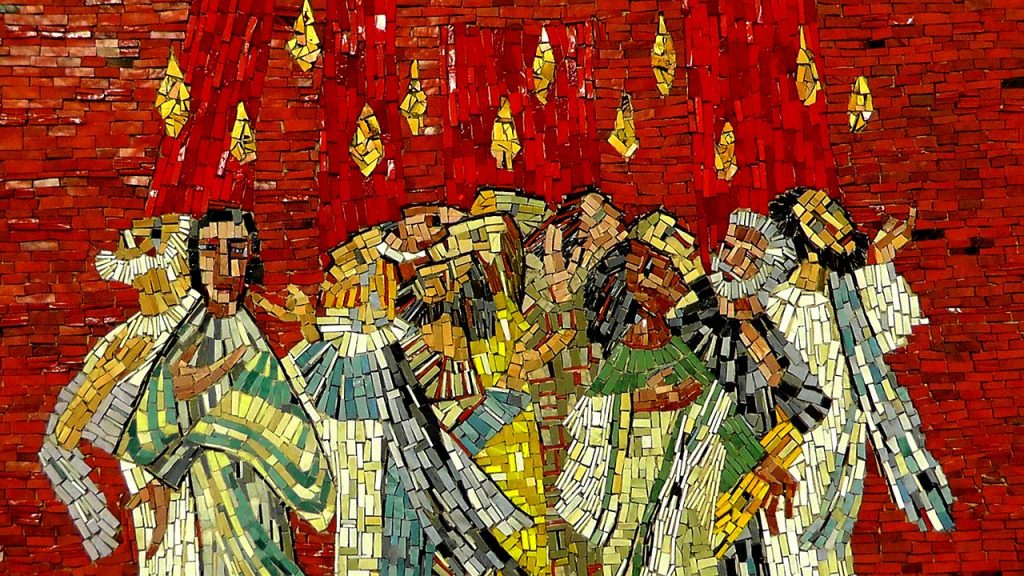WHERE?
I made my first visit to Jerusalem in December 1963. It was then split between Israel and Jordan, and I had no access to the Old City. The owner of the Holyland Hotel in West Jerusalem had compensated by creating a very large model of 1st century Jerusalem which I found absolutely fascinating. I still do. Every time I visit Jerusalem I go and see it in the open air in the Israel Museum.
It shows how congested Jerusalem was at the time of Jesus. The model shows a lot more open space within the ‘third wall’ to the north, but this was only built from 42 CE, a decade after Jesus’ crucifixion. The city Jesus knew was divided into two parts: the Upper City where the king and the wealthy lived, and the Lower City where all the rest lived cheek by jowl. There was a wall running along the side of the valley separating them, but there must have been gateways in the wall to enable access.

So where did Pentecost happen?
This is actually two questions: 1. Where were Jesus’ followers filled with the Holy Spirit? and 2. Where did Peter preach to over 3,000 people?
1. Luke tells us that they were sitting in a house. How many? Was it just the twelve apostles (Acts 2.14)? Or was it the twelve plus certain women and Jesus’ family, i.e. about 24 (Acts 1.14)? Or was it 120 (Acts 1.15)? However many there was they would not have fitted into the poorer houses in the Lower City. My guess that they were in the house of a wealthy supporter in the Upper City, such as the one where the Last Supper took place. And where in the house? My English translation says ‘they were all together in one place’ – that sounds like a large room. BUT our English translation, as so often, is wrong! There is no word for ‘place’ in the Greek. Luke simply says they were all together, sitting. As far as the New Testament says, they could have been at a beach. My guess is that they were sitting in the open courtyard of a large house in the Upper City.
2 Where did Peter preach to over 3,000 people? There certainly wasn’t room in the Lower City. In the Upper City there were only two places, namely the theatre or amphitheatre opposite Caiaphas’ palace, or the City Market, next to the Roman Praetorium. Neither of them ideal or even possible. There was no room in the semi-slums of the Lower City. In my view there was only one space that was possible: the area north of the houses of the Lower City, a large open space between the horse-racing stadium or Hippodrome and the southern gates of the Temple, the Huldah gates. The great steps leading up to the temple would have provided an ideal podium for Peter’s speech.
WHEN?
When did this happen? Well, on the day of Pentecost. Luke tells us it was when “the day of Pentecost had fully come.” Pentecost had in fact started at sunset of the day before, according the Jewish way of reckoning time. But it only came properly at daybreak, when priests in the Temple could see sunlight on the towers of Hebron. As Peter tells the puzzled crowd, “it’s only nine o’clock in the morning.”

Pentecost comes from the Greek meaning ’fifty’. It translates the Hebrew ‘Shavuot’ meaning ‘weeks’. So it means a week of weeks, 7 x 7; in other words 49 days after the First day of Unleavened Bread, rounded up to 50. The day after Passover, the First Day of Unleavened Bread, was always 15th Nisan, which was when the first sheaf of barley was cut. The next day, 16th Nisan, it was waved before the Lord in the Temple. The days up to Pentecost were then simply called first, second, third etc from the waving of the sheaf of barley.
The time between Passover and Pentecost mirrored the time that Israel wandered in the desert before they received the Torah, the Law, at Mount Sinai. Maimonides (1138 – 1204) wrote, “Just as one who is expecting the most faithful of his friends is wont to count the days and hours to his arrival, so we also count from the omer* of the day of our Exodus from Egypt to that of the giving of the law, which was the object of our Exodus, as it is said, ‘I bore you on eagles’ wings, and brought you unto myself.’”
- An omer was equivalent in weight to 43 chickens’ eggs (Wikipedia).
The festival was also called, the feast of harvest, that is of the wheat harvest. Not one, but two loaves were made of wheat, leavened with yeast and waved before the Lord.
It was also the day when Jews presented their tithes, 10% of their agricultural produce. So another name was the day of first fruits. See Numbers 28.26-31 and Deuteronomy 26.1-11.
So a lot happened on the Day of Pentecost! Luke describes the crowd listening to Peter as Jews, devout men, coming from fifteen different countries. It may be that whose living at some distance celebrated Passover at home, and then made the journey to Jerusalem in time for Pentecost. Just a suggestion.
WHAT?
What did happen on this one special day?

1. First the followers of Jesus, either 12 or 24 or 120, had a mind-blowing experience of the Holy Spirit. ‘All of them were filled with the Holy Spirit and began to speak in other languages, as the Spirit gave them ability.’ (Acts 1.4)
They then appeared in public and made their way singing and dancing and praising God down to the valley between the Upper and Lower Cities, coming out at the southern entrance to the Temple. That would certainly have attracted comment!
But this was not the only occasion such an event took place.
When the believers responded to the Sanhedrin’s threats by praying for boldness, ‘the place in which they were gathered together was shaken; and they were all filled with the Holy Spirit ‘ (Acts 4.31)
When Peter spoke to the Gentile centurion Cornelius, ‘the Holy Spirit fell upon all who heard the word. The circumcised believers… heard them speaking in tongues and extolling God.’ (Acts 10.44-46)
Certainly what happened to Jesus’ followers was remarkable enough.
But what is never mentioned by preachers is the end result.

2 ‘Those who welcomed his message were baptised, and that day about three thousand persons were added.’ (Acts 2.41). Just work it out mathematically. If 3,000 were baptised, it must have been in the river Kidron. They would have walked all the way though the Lower City, gone out by the Fountain Gate or the Valley Gate.There they would have been baptised in the fast flowing river, presumably by one of the twelve apostles. Work it out mathematically. Each of the twelve would have to have dunked 250 adults under the water. If they were doing it for eight hours, that comes to a baptism every two minutes. Even if Luke’s figures are exaggerated, it was a massive event which went on all day.
What did the authorities make of it? The last chapter of my book ‘Jesus the Troublemaker’.imagines the police report which the Captain of the Temple Guard might have sent to the High Priest about it:
____________________________________________________________________________________________________________________________________
El’chud BarNachum Captain of the Temple
To Yosef BenKayafa High Priest
Greetings
I beg to report a disturbance in the city which took place this morning, in the very shadow of the Temple. A crowd of several thousand pilgrims gathered in the square below the Huldah Gates. They were addressed by a leading member for the group that followed the condemned blasphemer Yeshua Ish-Natzaret. He asserted that Yeshua’s death was a fulfilment of prophecies in the Readings, and that in his case the Holy One, blessed be he, had brought forward the general resurrection, which these enthusiasts, like the Hasidim, believe in. He claimed that this miracle, which has not been witnessed by anyone outside the immediate circle of his followers, proves that he is Ha Mashiach. I am sorry to say that the crowd, consisting mostly of Jews from the Dispersion, were taken in by this story. They were then persuaded to have themselves baptised in the name of Yeshua Ha Mashiach, and several thousand were shepherded through the Lower City to the Valley Gate, from where the twelve members of Yeshua’s inner circle took them and baptised them in the river Kidron. It lasted the entire day. It was a scene of religious fanaticism we have not seen since the days of Yochanan the baptiser.
There are, in my view, only two saving graces. The first is that the Romans probably remain unaware of the event, because it happened on the opposite side of the Temple from the Antonia. But you may wish to inform the governor out of courtesy. The other is that most of the crowd involved seem to have been pilgrims from the Dispersion, and so after the feast, the number of local sympathisers will in all probability be small.
In the meantime, I have detailed two of my men to work out of uniform and keep an eye on this new populist religious movement. It is strange that whereas after Yochanan the baptiser’s death his movement dwindled, after the death of Yeshua Ish-Natzaret his movement seems to be growing.
I wish you health and shalom.
The seventh day of Sivan, Feast of Shavu’ot, mid-afternoon.
